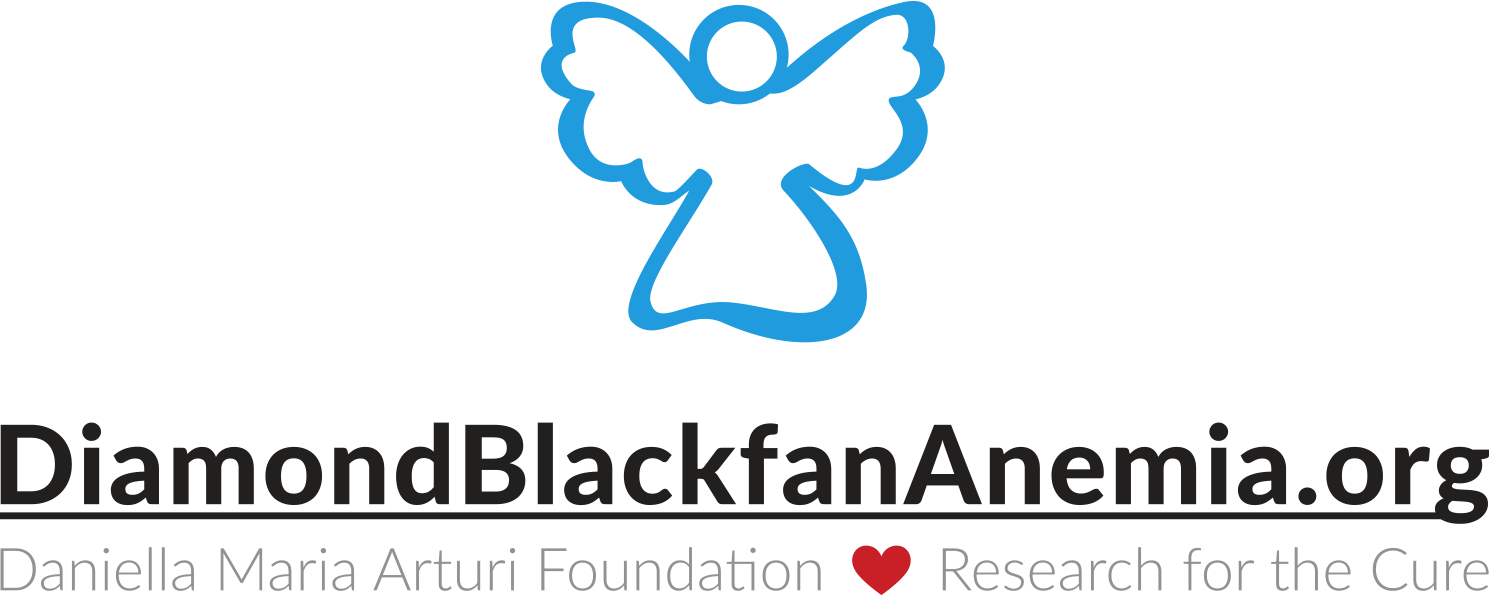Q & A
What is Diamond Blackfan anemia?
Diamond Blackfan anemia (DBA) is a rare blood disorder. In DBA, the bone marrow (the center of the bone where blood cells are made) does not make enough red blood cells that carry oxygen throughout the body. It is usually diagnosed during the first year of life.
What causes DBA?
Some people have a family history of the disorder. About one-quarter of people with DBA have a known genetic cause. In many people with DBA, doctors do not know the cause.
Can anyone have DBA?
DBA affects both males and females equally. It occurs in every racial and ethnic group.
Can other members of the same family have DBA?
Yes, if someone has DBA there is up to a 50% chance that each of his or her children will have DBA
What are the signs and symptoms?
People with DBA have symptoms common to all other types of anemia, including pale skin, sleepiness, rapid heartbeat, and heart murmurs. In some cases, there are no obvious physical signs of DBA. However, about 30 to 47% of those with DBA have abnormal features involving the face, head, and hands especially the thumbs). They might also have heart and kidney defects. Many children are short for their age and might start puberty later than normal.
How do doctors know if someone has DBA?
Several tests can be used to tell if a person has DBA. One test a doctor can perform is called a bone marrow aspirate. This is a test in which a needle is inserted into a bone and a small amount of bone marrow fluid is taken out and studied under a microscope. Blood tests can also be done to see if there is a genetic basis for DBA or certain chemical abnormalities linked to DBA.
How is DBA treated?
To treat very low red blood cell counts in people with DBA the two most common options are corticosteroids and blood transfusions. Bone marrow/stem cell transplantation might also be considered. Some people need no specific therapy. A qualified doctor can recommend the best treatment options.
- What is corticosteroid treatment?
Corticosteroids are drugs used to treat many medical conditions. One type of corticosteroid is called oral prednisone, one of the most successful treatments for people with DBA.
- What are the side effects of corticosteroid treatment?
ajor side effects when these drugs are used in high doses for a long time include weight gain, water and salt retention, high blood pressure, muscle weakness, osteoporosis (brittle bones occasionally leading to fractures), wounds that won’t heal, headaches, growth problems, eye diseases such as cataracts and glaucoma, and the disruption of hormones that regulate normal body functions. Anyone using these drugs should be monitored carefully by a doctor.
- What is a blood transfusion?
In a blood transfusion, a person receives healthy red blood cells from another person. With DBA, transfusions can be needed every 3 to 5 weeks.
- Do blood transfusions have any complications?
Sometimes people can develop transfusion reactions, with symptoms such as fever and rash. Medication can be given before a transfusion to help prevent these symptoms. Red cell transfusions can also cause a buildup of extra iron in the body, which can harm the heart or liver, cause diabetes, or slow down normal growth. The amount of iron in the body of a person with DBA must be checked regularly. If iron levels are too high, a doctor can recommend drugs to remove excess iron in body tissues. This process is called chelation therapy. People getting transfusions should avoid iron supplements.
- What is bone marrow/stem cell transplantation?
Bone marrow/stem cell transplantation replaces a person’s bone marrow/stem cells with those from a healthy, matching donor.
How many new cases of DBA are diagnosed each year?
There are about 25 to 35 new cases of DBA each year in the United States and Canada.
Where did DBA get its name?
The anemia was named for Dr. Louis K. Diamond and Dr. Kenneth D. Blackfan, the first doctors who documented cases of the disease in the 1930s.
